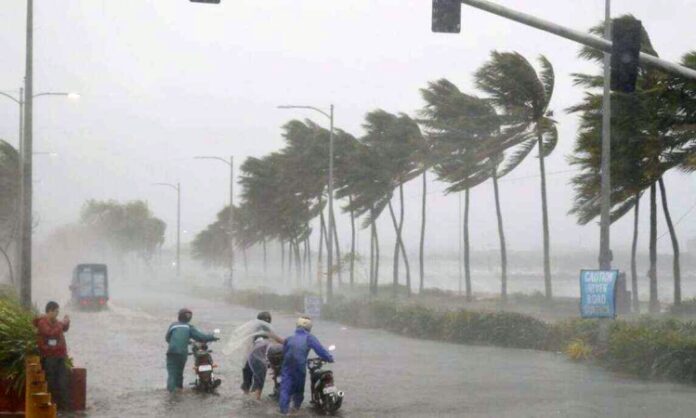Pune: Surface temperature of the Indian Ocean is expected to rise from 1.4 degrees Celsius to 3 degrees Celsius between 2020 and 2100. This will lead to a near-permanent heatwave conditions in the sea, increase intensify cyclones, disturb monsoon and push up the sea levels, a fresh study stated.
The study, which was carried out by a climate scientist at the Pune-based Indian Institute of Tropical Meteorology (IITM) claimed that marine heatwaves, deciphered as abnormally high ocean temperatures, have been are expected to go up from 20 days per year (during 1970-2000) to 220-250 days per year by the end of 21st century.
Also Read: Centre shifts focus on marine biodiversity & climate mitigation
The increased period of marine heatwaves will lead to habitat destruction due to coral bleaching, seagrass destruction, and loss of kelp forests. It will also adversely affect the fishery sector in the Indian Ocean. Warming of sea level will cause intensification of cyclones, and thereby affect the live in coastal areas.
The study further warned that warming of the Indian Ocean will not be confined to the surface. Temperature of water will witness rise in the depth of up 2000 metres. Temperature of sea water is currently increasing at the rate of 4.5 zetta-joules per decade and is predicted to increase at a rate of 16-22 zetta-joules per decade in the future, stated the study carried out by an IITM team led by Roxy Mathew Koll.
Also Read: Biparjoy turns into extremely severe storm, to hit Gujarat coastline
Koll, in the study titled “Future projection for the tropical Indian Ocean” said, “The future increase in heat content is comparable to adding the energy equivalent of one Hiroshima atomic bomb detonation every second, all day, every day, for a decade.” The maximum impact of warming will be witnessed in the northwestern Indian Ocean, including the Arabian Sea, while there will be reduced warming off the Sumatra and Java coasts.
Seasonal cycle of surface temperature is also expected to change owing to accelerated warming of the sea. Accordingly, frequency of extreme weather events in the Indo-Pacific region is likely to increase. The maximum basin average temperature of the Indian Ocean will be in the rage of 28.5 to 30.7 degree Celsius by 2100 against 26-28 degrees Celsius throughout the year during 1980-2020.
Also Read: Microplastic contamination of sea water more on eastern coast: Study
Authors said that ocean surface temperature above 28 degrees Celsius are generally conducive to deep convection and cyclogenesis. Heavy rainfall events and extremely severe cyclones have already increased since the 1950s and are projected to increase further with increasing ocean temperatures.
The study also noted that Indian Ocean dipole, which contributes to formation of monsoon clouds and cyclones is also likely to shift owing to rise in surface temperature. As a result, frequency of extreme dipole events is set to intensify by 66% while moderate events is project to come down by 52% by 2100. See level will be push up more due to thermal expansion, which, which is larger than the contribution from glacier and sea-ice melting.
Also Read: At COP27, India calls for conservation of mangroves for carbon sinking
Acidity of the Indian Ocean is set to aggravate and pH value of surface water is expected to come down to 7.7 by the end of this century from the current level of 8.1. Surface chlorophyll and net primary productivity are also predicted to decline, with the strongest decrease of about 8-10% in the western Arabian Sea.
The change in pH value of surface water will have a cascading effect on marine ecosystem. Several marine organisms, particularly corals and organisms that depend on calcification to build and maintain their shells, are sensitive to the change in ocean acidity. “The change may be easier to fathom when we realise that a 0.1 fall in human blood pH can result in rather profound health consequences and multiple-organ failure,” Koll said.
Also Read: Billions set to face unprecedented high temperature globally: Study
Indian Ocean is surrounded by 40 countries, which is home to about one third population of the world. And climatic change in the Indian Ocean region will have a significant bearing on societal and economic state. The rise in surface water temperature has made the Indian Ocean one of the most troubled region in the world, owing to growing risk of natural hazards and coastal community are bearing the brunt of weather and climate extremes.




